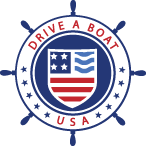The NATO Phonetic Alphabet for Boaters
When you’re out on the water, clear and accurate communication can be a matter of safety. Whether you’re hailing the Coast Guard, coordinating with a nearby vessel, or checking in with a marina, misinterpreting a single letter can lead to confusion or danger. This is why all boaters rely on the International Radio Alphabet—also known as the Phonetic Alphabet.
Key Takeaways
- The International Radio Alphabet (also known as the NATO or Phonetic Alphabet) is a vital safety tool used on VHF radio to ensure clear and accurate communication on the water.
- It assigns a unique, distinct word (like Alpha, Bravo, Charlie) to every letter to prevent confusion between similar-sounding letters (e.g., M vs. N).
- The modern, globally recognized Alpha-Bravo-Charlie system was developed by the ICAO and adopted by the IMO and ITU because its words were scientifically chosen for clear understanding across different languages.
- Always use the official alphabet and never use casual or made-up words; consistency is critical for universal clarity.
- The alphabet must be used anytime you convey critical information, especially in noisy or poor-signal conditions.
- While standard pronunciation often works, specific phonetic terms are available for numbers (e.g., FIFE for 5, NINER for 9) to further eliminate potential confusion.
What is the NATO Phonetic Alphabet?
The phonetic alphabet, also called the Radio Alphabet and the NATO Alphabet, assigns a unique, distinct word to every letter of the alphabet, to avoid confusion between letters that sound similar (like “B” and “P,” or “M” and “N”).
For example, if you need to spell out the word “BOAT,” you don’t just say B-O-A-T. You say: Bravo – Oscar – Alpha – Tango.
Origins of the International Phonetic Alphabet
This standardized alphabet evolved from early national systems like the “Able Baker” code used during WWII. The modern Alpha-Bravo-Charlie system was scientifically developed in the 1950s by the International Civil Aviation Organization (ICAO), using extensive linguistic testing to select words that are easily understood by non-native English speakers. Adopted by the ITU and IMO, this NATO-standard system is now the mandatory and universal protocol for all professional and recreational maritime communications worldwide.
The Full NATO Radio Alphabet for Boaters
Mastering this list is key to professional-sounding and effective communication on VHF radio (and all maritime communication).
| Letter | Phonetic Word | Pronunciation Guide |
| A | Alpha | AL-fah |
| B | Bravo | BRAH-voh |
| C | Charlie | CHAR-lee or SHAR-lee |
| D | Delta | DELL-tah |
| E | Echo | ECK-oh |
| F | Foxtrot | FOX-trot |
| G | Golf | GOLF |
| H | Hotel | HOH-tel |
| I | India | IN-dee-ah |
| J | Juliett | JEW-lee-ett |
| K | Kilo | KEY-loh |
| L | Lima | LEE-mah |
| M | Mike | MIKE |
| N | November | NOH-vem-ber |
| O | Oscar | OSS-cah |
| P | Papa | PAH-pah |
| Q | Quebec | keh-BECK |
| R | Romeo | ROW-mee-oh |
| S | Sierra | see-AIR-ah |
| T | Tango | TANG-go |
| U | Uniform | YOU-nee-form or OO-nee-form |
| V | Victor | VIC-tah |
| W | Whiskey | WISS-key |
| X | X-ray | ECKS-ray |
| Y | Yankee | YANG-kee |
| Z | Zulu | ZOO-loo |
Pro Tip
Never use casual or made-up words. Stick to the official alphabet above. Consistency is what makes this system work globally.
A note about numbers
While less common, the numbers 0 through 9 also have special pronunciations in maritime use to avoid confusion with words. However, for most recreational boating in the US, standard clear pronunciation will be all you need.
| Digit | Phonetic Term | Pronunciation Guide |
| 0 | Zero | ZEE-roh |
| 1 | One | WUN |
| 2 | Two | TOO |
| 3 | Three | TREE (or TH-REE) |
| 4 | Four | FOW-er |
| 5 | Five | FIFE |
| 6 | Six | SIX |
| 7 | Seven | SEV-en |
| 8 | Eight | AIT |
| 9 | Nine | NINER |
6 Situations When You Should Use the Phonetic Alphabet While Boating
Boaters use the phonetic alphabet anytime they need to convey critical, highly specific information where a misunderstanding could have serious consequences.
Here are the primary uses:
1. Identifying your vessel or hailing a station
Vessel names can be common or have similar-sounding letters (e.g., Misty vs. Misty II; Puffin vs. Buffer). To avoid confusion, use the NATO alphabet to spell out your vessel’s name to a marina, lock master, or another boat.
- Example: “This is the vessel Papa-Alpha-Papa-Alpha, Papa. Over.”
2. Relay of emergency or distress calls (Mayday)
In a high-stress, noisy, or poor-signal environment, every piece of information must be confirmed clearly. You can use the NATO alphabet to spell out a vessel’s name or a piece of identifying information to the Coast Guard or rescue services.
- Example: “My vessel’s registration is Delta-Sierra-Nine-Zero-Foxtrot-Alpha.”
3. Giving location coordinates
GPS coordinates use letters (N/S/E/W) and a series of numbers that must be precise. Numbers are also sometimes phonetically pronounced for clarity (e.g., Niner for 9, Tree for 3). Use the NATO alphabet to confirm a position to a search and rescue operation or communicate a waypoint to another boat.
- Example: “My position is Latitude November three-five, five-zero decimal six. Longitude Whiskey seven-eight…”
4. Communicating docking or slip information
Marinas often use letters for dock sections and numbers for slips. The wind or engine noise can make these challenging to hear. Use the NATO alphabet to confirm your assigned slip number with the dock master.
- Example: “Yes, I understand. Slip is Echo-fourteen. That is Echo for Echo, one-four.”
5. Transmitting registration or Hull Identification Numbers (HIN)
A HIN is a long string of mixed letters and numbers. Boat registration numbers pose the same challenge. You can use the NATO alphabet to provide the necessary information to a boatyard or law enforcement.
- Example: “The HIN ends in Quebec-Zulu-Four-Three-Victor.”
6. Spelling out names of people or places
Giving a contact person’s name to a remote service or spelling out a confusing inlet or channel name requires clarity and sometimes speed, depending on the situation. Use the NATO alphabet to make sure the listener hears the correct information.
- Example: “The person you need to reach is Juliett-Oscar-Hotel-November.”
Learn about safe boating in the U.S. and get certified with Drive A Boat USA!
The radio alphabet is a simple yet powerful tool. When you know it by heart, you can communicate the most vital information—like your vessel’s name, location, or emergency details—the first time, every time. Practice a few times before your next trip, and you’ll be communicating like a pro!
Drive A Boat USA offers 100% online state-specific boating courses that will get you certified and ready to go boating safely. Learn about the rules of the road, navigation aids, buoys and markers, and more to get your boater card in New York, Florida and California.

